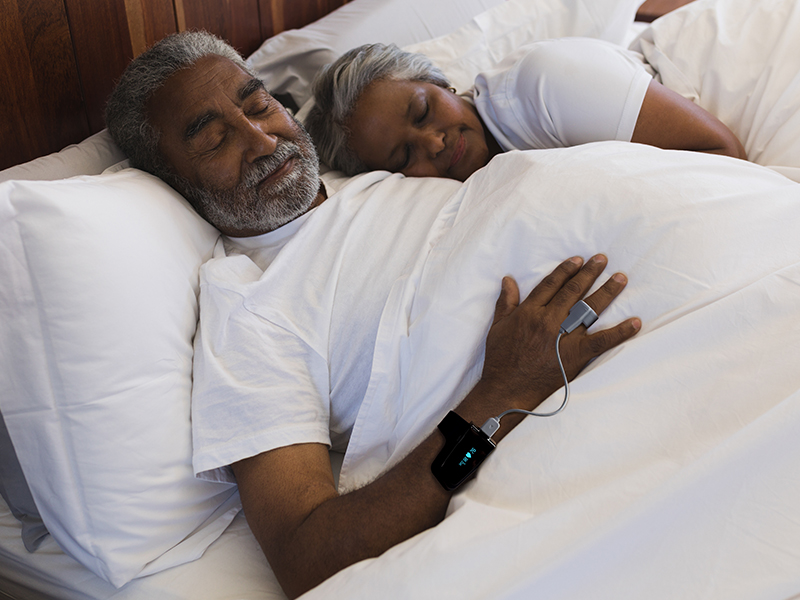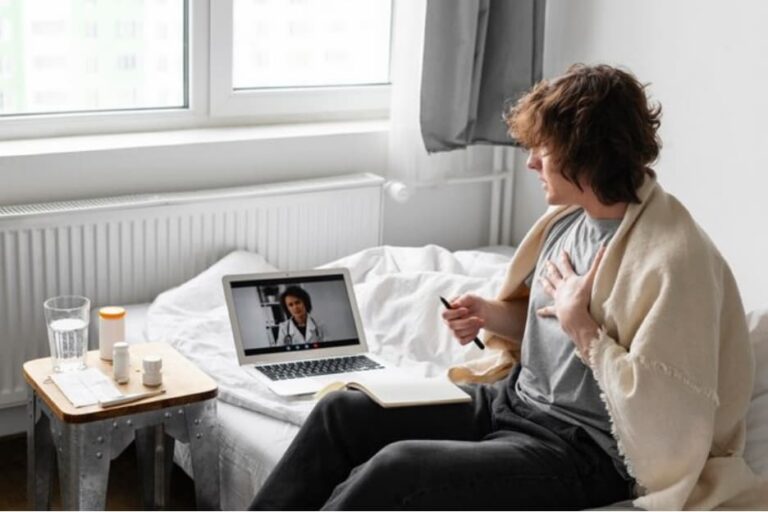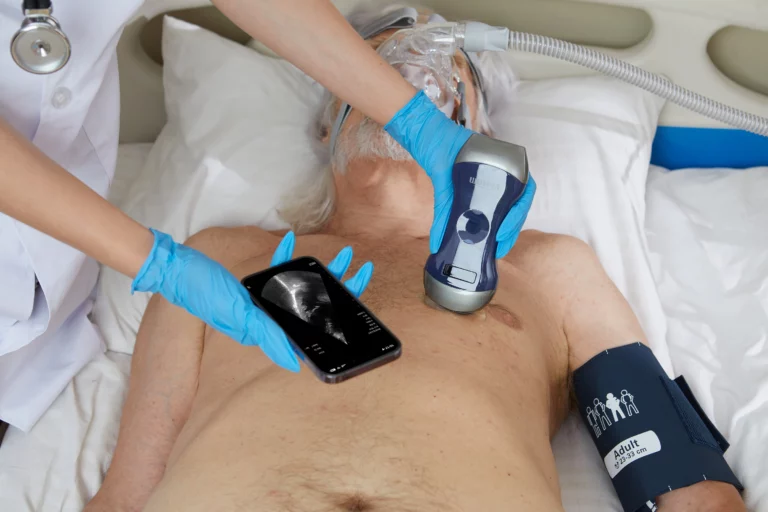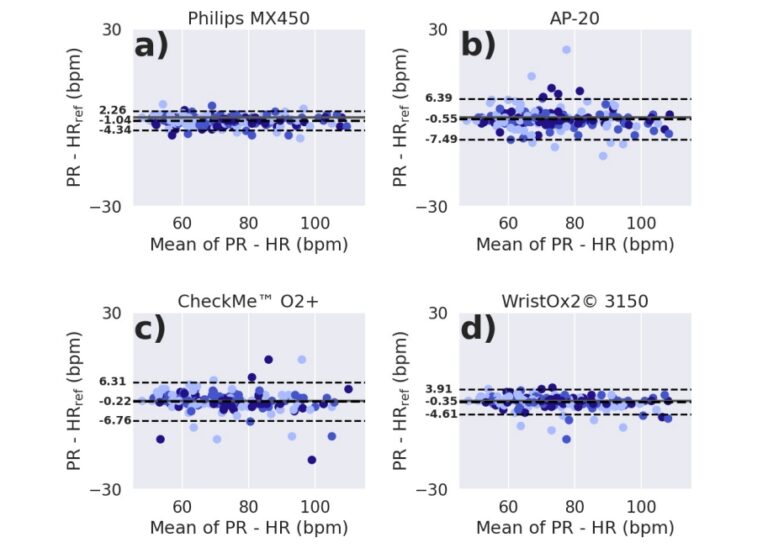You already know the important role that sleep plays in your life. Fail to sleep enough, and you feel soggy and unwell the next day. Unfortunately, sleeping well isn’t as easy for everyone. Some sleep-related conditions can cause disruptions in your sleep pattern, making you feel tired even after resting through the night. Sleep apnea is one of these conditions that affect not only your sleep but also your health in the long run. Monitoring blood saturation levels with a pulse oximeter is instrumental in the diagnosis and understanding of sleep apnea.
About Sleep Apnea
Sleep apnea is a condition with the potential to affect your sleep habits and patterns in a significant way. While there are no specific details about the prevalence, it is estimated that up to 3% of the population is affected by sleep apnea. The condition does not only affect adults, as up to 20% of children who regularly snore may also have some level of sleep apnea.
The condition causes short pauses in your breathing pattern while you are asleep. This often happens when your airway narrows, which causes a disruption in breathing. Other potential causes also exist. The interruptions in breathing can affect your sleep quality, but also lead to severe complications.

Symptoms
If you have sleep apnea, you will often not be the first to notice the condition. There are many cases where the partner or family member first notices the symptoms. Your partner may tell you that you stopped breathing momentarily during the night and that you let out loud snores. Sometimes, people with sleep apnea may make a choking or gasping sound.
There are, however, certain symptoms that you can look out for. While these do not necessarily mean you have sleep apnea, they are still something to be concerned about:
- Your mouth feels dry when you wake up
- Feel tired during the day
- Experiencing headaches upon waking up
- Waking up several times during the night
- Feelings of frustration and irritability
- Problems with your ability to focus
- More frequently urinating at night
Main Types of Sleep Apnea
There are different types of sleep apnea. Awareness that there are different types of sleep apnea is essential. These include:
- Obstructive Sleep Apnea: A more commonly found type of condition that happens when there is an obstruction in breathing. This is usually caused by your throat muscles relaxing too much, which then makes it hard for air to enter your lungs.
- Central Sleep Apnea: A less common type, but also one to educate yourself about sleep apnea. In central sleep apnea, your brain has difficulty sending signals to the specific muscles in your body that are responsible for regulating your breathing.
- Complex Sleep Apnea Syndrome: Complex sleep apnea syndrome is a combination of obstructive sleep apnea and central sleep apnea. There are scenarios where a person has obstructive sleep apnea that transition to central sleep apnea. It’s also possible to develop sleep apnea that has causes related to both of these types.
Sleep apnea is highly correlated with blood oxygen saturation, and a certain length of apnea will cause a significant decrease in saturation. Therefore, sleep apnea can be assessed according to the oxygen desaturation index corresponding to the apnea index. Pulse oximeters can effectively screen out patients with moderate to severe sleep-disordered breathing by recording changes in pulse oxygen saturation during sleep throughout the night. Also, pulse oximeters can be used by hospitals for out-of-hospital examination and in-hospital monitoring of patients with obstructive sleep apnea, which is important for the management of patients’ chronic diseases.
Pulse Oximeter for Sleep
A couple of strategies can be used to monitor your blood saturation level while you are sleeping. One of the best options is a pulse oximeter. These devices use special technologies to determine the amount of oxygen in your blood vessels.

What Is Portable Pulse Oximeter?
There are different types of oximeters on the market. Various shapes are available, but they all focus on providing a consistent reading of your blood saturation level. A portable pulse oximeter is generally one of the most preferred options, particularly due to its compact size. Since you want to wear the device while you sleep, you need something that is not invasive on your wrist or hand. Portable pulse oximeters usually strap around your wrist, or you place them on your finger. These devices will often also record your heart rate while you sleep.
How To Understand SpO2 Report?
Modern portable pulse oximeters can record and store data – either on an internal memory system or by sending the information to your smartphone. You need to ensure you understand how to interpret the information in these reports.
This is the data that the reports will usually contain:
- sleep stages
- AHI: sleep apnea hypopnea index
- ODI: oxygen depletion index
- longest apnea time
- mean apnea time
- Lowest blood oxygen saturation at night
When oxygen saturation is less than 90%, for a healthy adult, the “normal” level is usually indicated to range from 95% to 100%. Those with sleep apnea may experience lower levels throughout the night. An oximeter oxygen level below 90% is considered low and abnormal. A reading below 80% is considered severely low.
Some of these devices will also provide you with additional information, such as the duration of your sleep. This can be helpful to determine if you are getting enough sleep, as well as to see when sleep apnea causes dips in your blood saturation level.
AHI stands for the Apnea–Hypopnea Index, or Apnoea–Hypopnoea Index. AHI is an index used to indicate sleep apnea’s severity, represented by the number of apnea and hypopnea events per hour of sleep.
This index is important for the severity grading and further diagnosis of obstructive sleep apnea. If the apnea and hypopnea are mainly obstructive (other than obstructive apnea and hypopnea, there are also central and mixed types that can be seen in the sleep monitoring reports), and the AHI reads over or equals 15 times per hour, then an obstructive sleep apnea can be confirmed regardless of whether a patient is demonstrating symptoms. If AHI reads over 5 but less than 15 times per hour, the patient’s symptoms and past medical history must also be taken into consideration when making the diagnosis. And patients can be confirmed with it if they have one of the following symptoms: sleepiness, fatigue, or insomnia, have been awakened at night, and the bedmate finds that the patient has habitual snoring (that is, most of the time snoring, not occasional snoring), interrupted breathing during sleep, diagnosed hypertension, mood disorder, cognitive impairment, coronary heart disease, stroke, congestive heart failure, atrial fibrillation, or type 2 diabetes.
Generally speaking, AHI over 5 but less than 15 indicates mild, AHI over 15 but less than 30 indicates moderate, and AHI over 30 is severe.
Why is Portable Pulse Oximeter Necessary?
Pulse oximeters can give a good indication of oxygen saturation levels in the blood. Despite the possibility that the accuracy of the readings can sometimes be affected by a number of factors, such as poor circulation, skin pigmentation, and nail polish, the pulse oximeters are still considered to be accurate in measuring oxygen saturation levels in the blood. If needed to be more accurate, the pulse oximeters are recommended to be used on the fingers or earlobes than on other parts of the body.
Thanks to many advancements in the medical industry, modern options do provide reliable data when you wear them for an appropriate amount of time.
Diagnosing, Treating, and Monitoring Sleep Apnea
Certain complications can happen when sleep apnea goes undiagnosed and untreated. Unfortunately, it can be challenging to recognize sleep apnea at an early stage. This is where a portable pulse oximeter can become exceptionally useful.
These devices are compact and usually fit around your wrist. While the user is asleep, the device will continuously monitor blood saturation levels, monitor and record the relevant data, which the user can use to draw up a report and submit it to a medical provider should there be any concern about sleep apnea. Sleep monitoring analysis reports may include frame reports, blood oxygen reports, respiration reports, body position reports, brain/myography reports, overnight sleep staging trend graphs, heart rate trend graphs, blood oxygen trend graphs, respiratory trend graphs, etc., and more. Patients can provide the sleep monitoring analysis report to clinicians to make the most effective treatment plan. This procedure can reduce the need for further sleep studies to diagnose sleep apnea.
One problem is that many of these portable oximeters are on the market, and quality is not something they all share equally. At Viatom, we understand that quality truly matters, alongside accuracy, when monitoring factors like your blood saturation level and other health metrics. We offer a wide range of oxygen monitoring devices that can even slip over your finger – giving you a non-invasive strategy for monitoring saturation levels at night. These are great for nighttime use and allow you to read your SPO2 levels at any time of the day. Through data collection from these devices, you can get a better overview of your sleep and understand how sleep apnea may possibly be affecting your health in general.
Conclusion
Sleep apnea is a critical health issue that can be effectively managed with proper monitoring. Viatom offers a comprehensive solution to track your sleep with ease using our high-quality portable pulse oximeter devices. Our mission is to provide innovative medical devices that promote disease prevention and support healthy living. With years of experience in the industry since 2013, we have established ourselves as a trusted brand for home medical devices.
As a leading manufacturer, we offer OEM and ODM services to meet the specific needs of our brand partners, distributors, and wholesalers. Our commitment to quality and customer satisfaction has made us a preferred choice in the industry.
If you need any support or have questions about our products, please don’t hesitate to contact us. Let Viatom be your partner in maintaining optimal health and preventing sleep apnea.
References :
https://www.mayoclinic.org/diseases-conditions/sleep-apnea/symptoms-causes/syc-20377631
https://www.self.com/story/sleep-apnea-types
https://www.sleepfoundation.org/sleep-apnea





